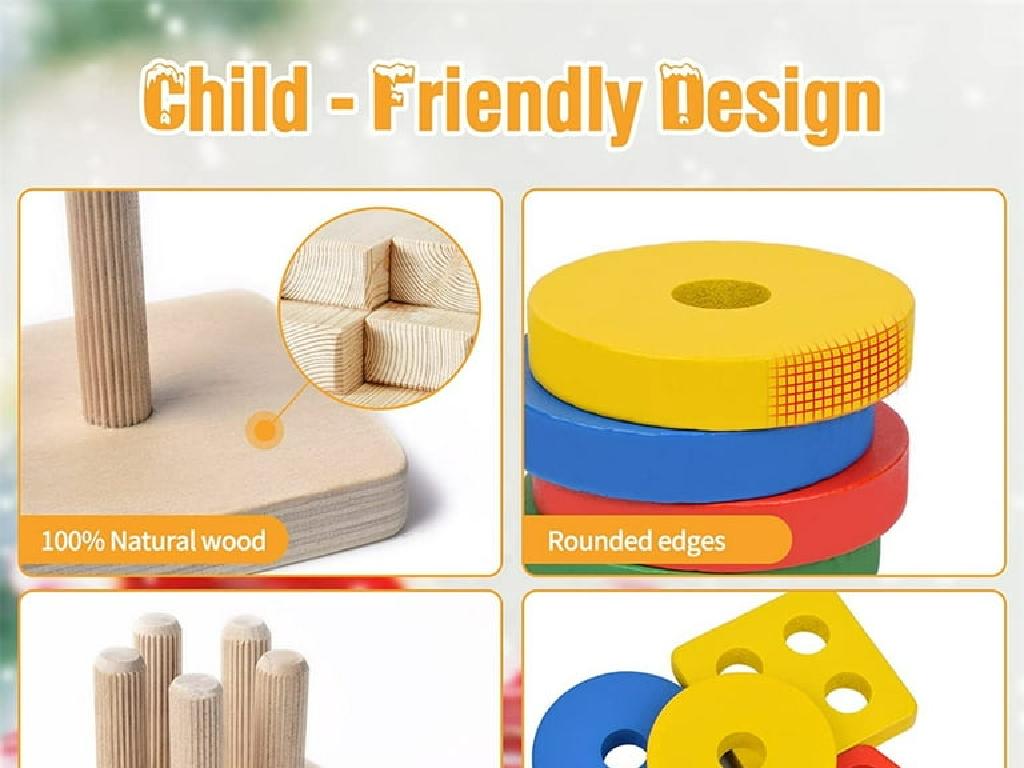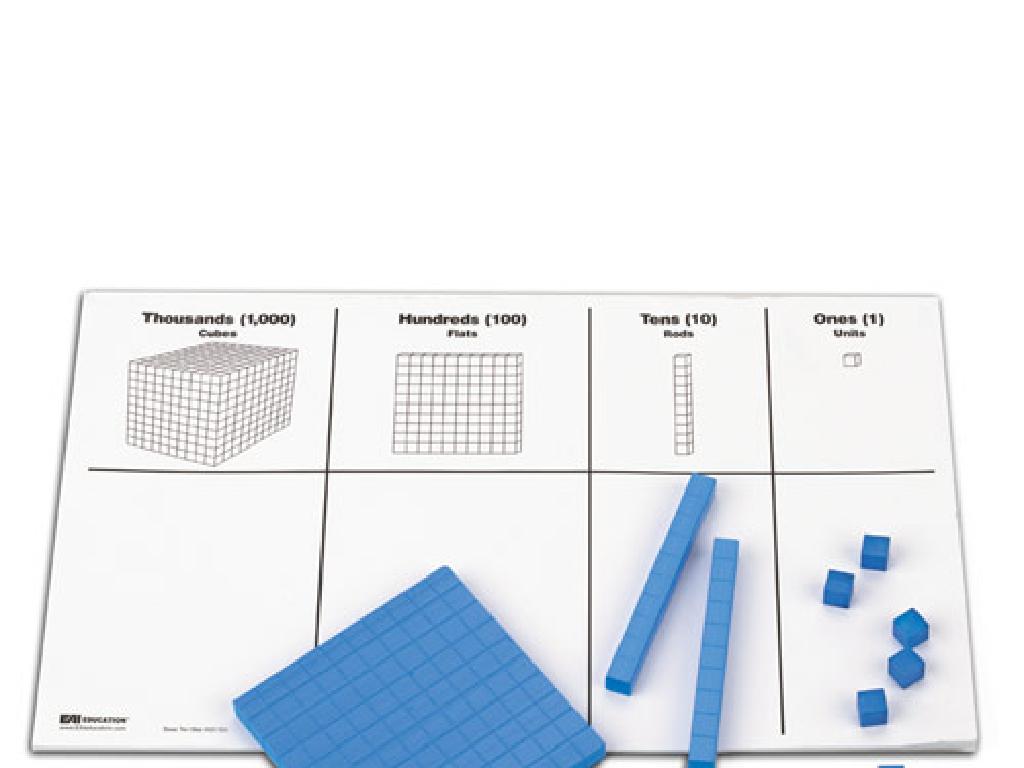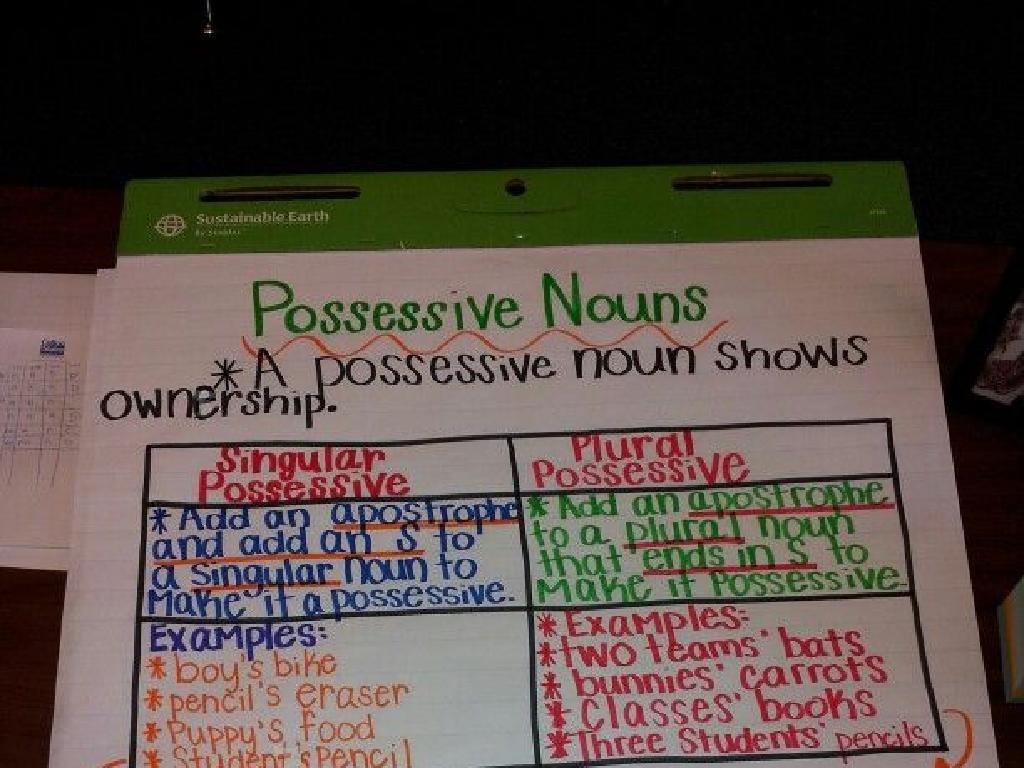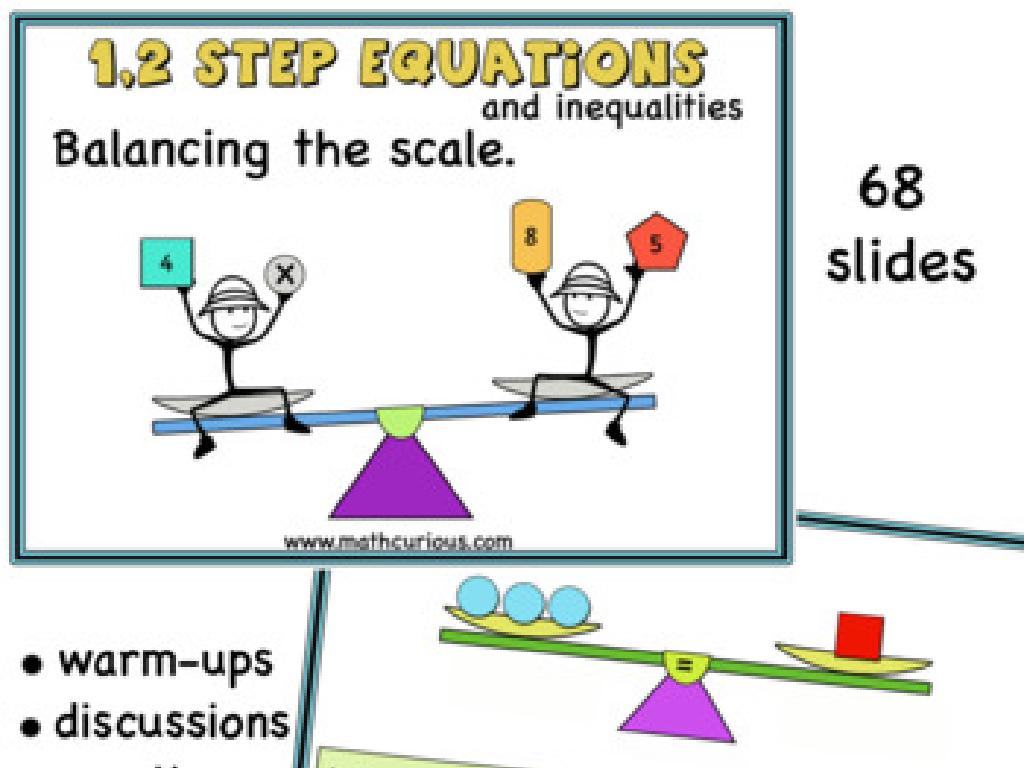Find The Short E Word
Subject: Language arts
Grade: Pre-k
Topic: Short E
Please LOG IN to download the presentation. Access is available to registered users only.
View More Content
Welcome to Short ‘e’ Sounds!
– Learn about the short ‘e’ sound
– Think of words with short ‘e’
– Examples: ‘bed’, ‘pet’, ‘net’
– Find short ‘e’ words in practice
– We’ll use pictures and games to spot them
– Share and say the words aloud
– Practice pronunciation as a class
|
This slide introduces the concept of the short ‘e’ sound to Pre-K students. Start by explaining what the short ‘e’ sound is and model the sound for the students. Encourage them to think of any words they know that contain this sound. Use visual aids like pictures to help them associate the sound with words they are familiar with. Engage the class in a fun activity where they find and practice saying short ‘e’ words, reinforcing their learning through repetition and peer learning. Make sure to praise their efforts to build confidence.
Exploring the Short ‘e’ Sound
– What is the short ‘e’ sound?
– It’s the ‘e’ in ‘bed’ and sounds like ‘eh’
– Short ‘e’ vs. long ‘e’
– Long ‘e’ sounds like ‘ee’, as in ‘see’
– Examples: ‘bed’, ‘red’, ‘net’
– More examples: ‘hen’, ‘pet’, ‘leg’
– Practice saying the short ‘e’
– We’ll say it together to learn how it sounds!
|
This slide introduces the concept of the short ‘e’ sound to Pre-K students. Start by explaining that the short ‘e’ sound is a vowel sound found in many words they use every day. It’s important to distinguish between the short ‘e’ sound and the long ‘e’ sound, which can be a common point of confusion for young learners. Use visual aids or props with the words ‘bed’, ‘red’, and ‘net’ to help them connect the sound to familiar objects. Engage the class by saying the short ‘e’ sound together and encourage them to mimic the sound. Make it interactive and fun by incorporating a short game or song that uses the short ‘e’ sound.
Listening for Short ‘e’ Sound
– Listen to words carefully
– Clap when you hear short ‘e’
– Like in ‘bed’, ‘red’, or ‘pet’
– Ready for a fun listening game?
– Practice makes perfect!
– The more we play, the better we get!
|
This slide is designed to engage Pre-k students in a listening activity that helps them identify the short ‘e’ sound in words. The activity involves listening to the teacher say words out loud and clapping when the short ‘e’ sound is heard. This interactive game helps students develop phonemic awareness, which is crucial for early reading skills. Teachers should articulate words clearly and repeat the activity with different words to reinforce learning. Examples of words with the short ‘e’ sound should be prepared in advance. Encourage students to listen attentively and participate enthusiastically.
Matching Game: Find the Short ‘e’ Sound
– Match words with short ‘e’ to pictures
– Drag the word to its picture
– Everyone gets a turn to play
– Have fun learning short ‘e’ sounds!
– Examples: ‘bed’, ‘net’, ‘red’, ‘ten’
|
This interactive slide is designed for a matching game to help Pre-k students recognize and learn the short ‘e’ sound in words. The activity involves dragging words that contain the short ‘e’ sound to their corresponding pictures. For instance, the word ‘bed’ would be matched with a picture of a bed. Ensure that each child has an opportunity to participate, reinforcing the concept of taking turns. As they engage in the activity, provide positive feedback and assistance as needed. The goal is to create a fun and educational experience that enhances their phonemic awareness and vocabulary. After the activity, discuss the words and sounds as a class to solidify their understanding.
Short ‘e’ Word Hunt Adventure
– Let’s go on a word hunt!
– Find words with the short ‘e’ sound
– Look for ‘e’ in books, labels, and charts
– Count how many ‘e’ words you find
– Keep a tally of each word you discover
– Who will be the ‘e’ word champion?
|
This slide introduces a fun and interactive classroom activity designed for Pre-K students to help them identify the short ‘e’ sound in words. The activity involves searching for words around the classroom that contain the short ‘e’ sound, such as ‘bed’, ‘red’, ‘pet’, and ‘net’. Encourage the children to look in books, on labels, and at any word charts that may be present in the classroom. They should keep a tally of the words they find. This will help them with phonemic awareness and early reading skills. The activity can be turned into a friendly competition to see who can find the most words, fostering engagement and excitement about learning.
Create Your Short ‘e’ Book
– Let’s make a short ‘e’ book
– Draw and write a short ‘e’ word
– Examples: ‘bed’, ‘pet’, ‘net’, ‘red’
– Each page gets one picture and word
– Share your book with a friend
|
This activity is designed to help Pre-k students recognize and practice the short ‘e’ sound in a fun and creative way. Encourage the children to think of words that contain the short ‘e’ sound and to illustrate them, which reinforces their understanding through both visual and written cues. As they work on their books, walk around the classroom to offer help and ensure they grasp the concept. Once completed, students should be encouraged to read their books to each other, fostering peer learning and confidence in reading aloud. Prepare a list of short ‘e’ words to prompt students if they get stuck and praise their efforts to create a supportive learning environment.
Class Activity: Short ‘e’ Bingo
– Let’s play Bingo with short ‘e’ words!
– Listen for words with the short ‘e’ sound
– Cover the word on your Bingo card
– Shout ‘Bingo!’ when all words are covered
|
This slide introduces a fun and interactive Bingo game to help Pre-k students recognize and learn words with the short ‘e’ sound. Prepare Bingo cards in advance with a selection of short ‘e’ words and some without the short ‘e’ sound. During the game, clearly pronounce words with the short ‘e’ sound and have students listen and find the word on their card. If they have the word, they cover it with a marker. The game continues until a student covers all their words and shouts ‘Bingo!’. This activity reinforces phonemic awareness and can be adapted with different words for multiple rounds of play. Encourage students to articulate the words and sounds as they play. Possible words to include: ‘bed’, ‘pet’, ‘red’, ‘net’.
Celebrating Short ‘e’ Mastery!
– Congratulations on learning short ‘e’!
– Keep practicing the short ‘e’ sound
– Practice with words like ‘bed’, ‘red’, and ‘pet’.
– Listen for short ‘e’ words daily
– Can you hear the short ‘e’ in ‘pen’? How about ‘net’?
– Applaud yourselves, short ‘e’ experts!
|
This slide is a conclusion to reinforce the learning of the short ‘e’ sound. It’s a celebration of the students’ hard work and an encouragement for them to continue practicing. Remind them to listen for the short ‘e’ sound in words they hear every day, which will help solidify their understanding. Encourage them to give themselves a round of applause, fostering a sense of accomplishment. As a follow-up, you can suggest that parents engage in listening activities at home, such as reading books with short ‘e’ words or playing games that involve identifying sounds in words.






